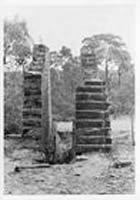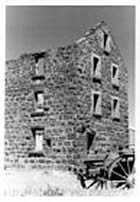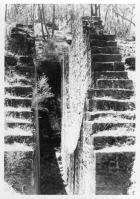Landscapes both shape and reflect the lives of their inhabitants. The auriferous valleys of central Victoria experienced extensive excavations during the rush to find gold, and now the gouged earth of the diggings speaks of the struggles of its miners. The remnants of orchards and market gardens hint at the infrastructure that was required to support the district’s population, while the numerous cemeteries indicate the place of birth, age and religious affiliation of the dead. The large civic buildings in Bendigo, Castlemaine and Ballarat testify to the wealth that was created by gold, but also remind us of the priorities of the time: the Bendigo Courthouse (law and order); the Castlemaine Market building (trade and commerce); and the post offices (communication and links back to Melbourne, Sydney, China, Cornwall, Ireland and beyond).
Today the goldfields are very different – crossed by highways, mobile phones, and tourists. It is the task of historians to draw theoretical and physical connections between the past and the present. Landscape analysis is one mechanism for doing this. Through an analysis of space and form, and the relationship of their constitutive elements, we seek to reanimate the past.








